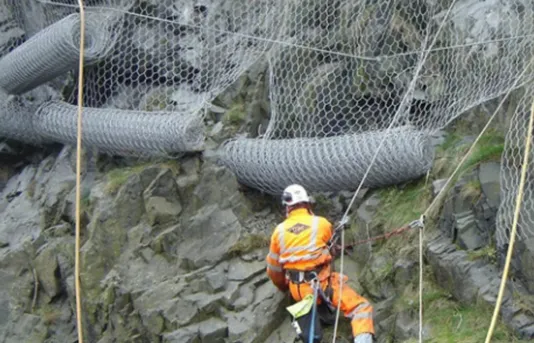-
 Phone:
Phone: -
 Email:
Email:

Exploring the Complex Symbolism and History of Barbed Wire in Modern Society and Warfare
The Complex Symbolism of Barbed Wire
Barbed wire, often seen as merely a utilitarian invention, carries with it a wealth of symbolism and historical significance. Originally designed for fencing livestock, it has transcended its initial purpose, becoming a powerful metaphor for confinement, exclusion, and boundaries in various contexts. The sharp, twisted points of barbed wire evoke feelings of danger and protection, often mingling simultaneously in the collective consciousness of societies.
Invented in the late 19th century, barbed wire revolutionized agriculture. It allowed farmers to efficiently enclose their land, protect crops, and manage livestock with minimal cost and effort. However, as its practical applications emerged, so too did its use in more nefarious contexts. During World War I and II, barbed wire came to symbolize the horrors of war, marking off borders between combatants and imprisoning enemies. The sight of barbed wire became synonymous with conflict, division, and suffering, particularly in prison camps where it separated the captives from the outside world.
In more contemporary times, barbed wire has been employed in various forms of fortification, both literal and metaphorical. Its presence in border security, refugee camps, and areas of political unrest imposes a visual barrier that signifies exclusion. When one sees barbed wire, it often raises questions about freedom, human rights, and the very notion of belonging. The wire acts as a physical reminder of the lines drawn between communities and nations, igniting discourse on the morality of such divisions.
barbed wire

Moreover, the aesthetic implications of barbed wire cannot be overlooked. Artists and photographers have frequently drawn upon this imagery to convey themes of isolation, struggle, and resilience. The stark contrast of the twisted, metallic wire against expansive landscapes often evokes a sense of desolation, prompting viewers to reflect on what lies beyond the barriers—freedom, belonging, or perhaps a painful history. In this way, barbed wire transcends its physical form to become a canvas for deeper emotional and philosophical exploration.
The duality of barbed wire—its nature as both protector and oppressor—also invites critical examination. While it serves to safeguard property and deter intruders, its presence can simultaneously instill fear and perpetuate exclusionary practices. Societies grapple with the implications of using barbed wire in curbing immigration or demarcating territorial disputes. The ethical considerations surrounding its use force us to confront questions about the values of safety and security versus compassion and inclusivity.
Furthermore, in popular culture, barbed wire often appears as a symbol of restraint in literature and film. It represents the struggles individuals face when confronted by societal constraints, such as poverty, discrimination, or confinement. Characters grappling with their own barbed wire often emerge as compelling figures, embodying the fight against the forces that seek to limit their potential.
In conclusion, the symbolism of barbed wire permeates various aspects of human experience, serving as a multifaceted representation of boundaries—physical, emotional, and societal. While its origins lie in agricultural necessity, its evolution speaks to the complexities of human interaction and the often painful nuances of division. Whether seen as a protective measure or as a mechanism of exclusion, barbed wire remains a potent reminder of the fragile balance between safety and freedom, inviting us to reflect on our own relationships with boundaries and the spaces we inhabit.
-
Wire Mesh for Every Need: A Practical SolutionNewsJul.25,2025
-
Steel Fences: Durable, Secure, and Stylish OptionsNewsJul.25,2025
-
Roll Top Fencing: A Smart Solution for Safety and SecurityNewsJul.25,2025
-
Cattle Farm Fencing Solutions for Maximum SecurityNewsJul.25,2025
-
Affordable Iron Binding Wire SolutionsNewsJul.25,2025
-
Affordable Galvanized Wire SolutionsNewsJul.25,2025
-
Wire Hanger Recycling IdeasNewsJul.25,2025








